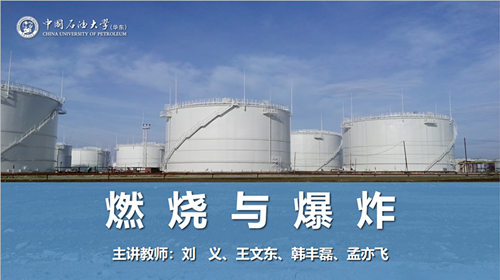
当前课程知识点:Introduction of New Structural Regional Economics > 7. A Demonstration of China's Development Achievements > 7.3.2 The Development of Yangtze River Economic Belt > 7.3.2 The Development of Yangtze River Economic Belt
返回《Introduction of New Structural Regional Economics》慕课在线视频课程列表
返回《Introduction of New Structural Regional Economics》慕课在线视频列表
欢迎大家继续学习
新结构区域经济学导论
本节课,我们继续了解
中国长江经济带
经济高质量发展成就
以及新结构区域经济学
如何认识有为政府
2016年1月
中国国家主席习近平
在推动长江经济带
发展座谈会上提出
“长江经济带共抓大保护
不搞大开发”
将长江经济带发展
上升为国家战略
但是,不搞大开发
并不意味着不开发
相反,根本目标是
实现开发
与保护双赢发展
这是在生态文明建设
和经济转型升级背景下
长江经济带
乃至全国实现
创新、协调、绿色、开放、
共享发展的
必然要求
经过多年来的努力
长江经济带
生态环境治理
与区域协调发展
成效显著
统计显示
2019年长江流域水质优良
比例为91.7%
水质优良比例较2015年提升16个百分点
工业园区治理效果显著
95%的省级及以上工业园区
建成污水处理设施
总计建成管网5.56万公里
同时,新旧动能
稳步转换
长江经济带逐步
成为我国高质量发展的重心
2019年长江经济带11省
GDP为45.78万亿
占全国GDP比例达46.2%
平均经济增长速度7.2%
超过全国平均水平1.1个百分点
12个战略性新兴产业,例如
大数据、人工智能、智能机器人
智能网联汽车
智能制造装备等
逐步成为长江经济带
主导产业
从城市群发展来看
长江经济带城市群
一体化
成效初显
逐步成为中国区域合作的
重点区域
其中长三角城市群
基础设施、市场一体化
遥遥领先
长江中游城市群
稳步推进交通基础设施一体化建设
成渝城市群
积极推进铁路大通道建设
规模化发展迅速
但是,长江经济带
绿色协调发展过程中
仍然存在一些困难和挑战
首先
生态比较优势
发挥不够,
化工企业
阻碍了部分省份绿色发展
生态环境污染问题
折射出长江流域工业体系的
系统性与结构性矛盾
忽略长江经济带的整体性
与各地区的比较优势
第二
产业同质化竞争突出
产业链协同发展短板
成为长江经济带
区域分工合作的障碍
由于分别处于工业化的不同阶段
下游地区集聚的优势产业
以资本密集型、技术密集型为主
而上游、中游地区集聚的
优势产业
以劳动密集型、资源密集型产业为主
但是三大区域内制造业
重合度均超过50%
第三,空间陷阱依然存在
区域极化与低水平均衡
将阻碍长江经济带
协调发展
长江经济带
资源要素流动
仍面临各种阻碍
区域之间的基础设施
公共服务和人民生活水平
差距较大
城市群合作
还缺乏协同效应
并且对区域发展的带动力不足
基于以上发展困境
新结构区域经济学
积极探寻解决之道
首先,完善有效市场作用
精确识别区域比较优势
促进长江经济带
区域要素再配置
例如,深化土地市场化改革
完善长江上、中、下游之间
建设用地指标
市场化交易制度
市场化交易制度
同时
推进资本市场化配置
优先流域内信用评级互认
债券市场互联、金融服务互通
第二,发挥有为政府作用
引导产业链重构
推动长江经济带
区域产业协同发展
以长江经济带为统一市场
识别全局比较优势
与局部比较优势
分类引导形成
长江经济带整体
比较优势产业链
因地制宜
推动产业链重构
形成长江经济带
产业链共同体
第三,绿色科技链再融合
推动长江经济带
绿色协同治理
全面升级
一方面
推动绿色协同治理水平
改善工业园区绿色基础设施
构建绿色技术创新体系
另一方面
共享自贸区建设
跨境电子商务、一带一路建设等对外开放政策。
第四
发挥数字经济和智能制造优势
强化企业自生能力
促进长江中上游
经济内生增长
一方面,可以积极借鉴浙江省
数字经济发展经验
加强新一代信息技术在
中上游
经济开发区的
应用
另一方面,以新基建
保障智能制造
补齐长江中上游城市群
传统基础设施短板
例如
加快5G、人工智能
大数据中心等基础设施建设
第四,提升城市群一体化水平
推动区域协调发展
重点发展
长江中游城市群
成都-重庆城市群
优化发展
直辖市
省会城市、重要节点城市等中心城市
第五,县域城镇化
与特色小镇多元发展
促进长江经济带
城市群一体化发展
一方面
加快新型城镇化建设
以县城为重要载体
提高医疗卫生设施水平
另一方面
规范发展特色小镇
提高绿色发展与
就业保障水平
最后,这是本节课的
一些参考文献
好,以上就是本节课的主要内容
希望通过本节课的学习
大家可以进一步了解
中国长江经济带的发展历程与治理经验
谢谢大家
-1.1.1 China's Physical Geography
--1.1.1 China's Physical Geography
--1.1.1 Test
-1.1.2 Hu Line
--1.1.2 Test
-1.1.3 Economic catch-up of the central and western China
--1.1.3 Economic catch-up of the central and western China
--1.1.3 Test
-1.2.1 Overview of China’s economy
--1.2.1 Overview of China’s economy
--1.2.1 Test
-1.2.2 Coastal special economic zones in China
--1.2.2 Coastal special economic zones in China
--1.2.2 Test
-1.2.3 Western Development strategy in China
--1.2.3 Western Development strategy in China
--1.2.3 Test
-1.2.4 Northeast China Revitalization Plan
--1.2.4 Northeast China Revitalization Plan
--1.2.4 Test
-1.2.5 Rise of Central China Plan
--1.2.5 Rise of Central China Plan
--1.2.5 Test
-1.3.1 Coordinated regional development and main functional area
--1.3.1 Coordinated regional development and main functional area
--1.3.1 Test
-1.3.2 China’s urban agglomeration pattern and the economic effect
--1.3.2 China’s urban agglomeration pattern and the economic effect
--1.3.2 Test
-2.1 Agricultural location theory
--2.1 Agricultural location theory
--2.1 Test
-2.2 Growth Pole Theory
--2.2 Test
-2.3 The Stages of Economic Growth
--2.3 The Stages of Economic Growth
--2.3 Test
-2.4 Pole & Axis System Theory
--2.4 Pole & Axis System Theory
--2.4 Test
-2.5 Center-periphery theory
--2.5 Test
-3.1 Why New Structural Economics
--3.1 Why New Structural Economics
--3.1 Test
-3.2 The Theoretical Foundation of New Structural Economics
--3.2 The Theoretical Foundation of New Structural Economics
--3.2 Test
-3.3 Does New Structural Economics Offer Explanations?
--3.3 Does New Structural Economics Offer Explanations?
--3.3 Test
-3.4 Application for Industrial Policy
--3.4 Application for Industrial Policy
--3.4 Test
-3.5 Does the idea of New Structural Economics work?
--3.5 Does the idea of New Structural Economics work?
-4.1 Regional Externality
--4.1 Test
-4.2 Endowment Structure Transformation
--4.2 Endowment Structure Transformation
--4.2 Test
-4.3 Role Boundary of Facilitating Government
--4.3 Role Boundary of Facilitating Government
--4.3 Test
-4.4 Spatial Optimal Equilibrium
--4.4 Spatial Optimal Equilibrium
--4.4 Test
-4.5 Evolution of Dynamic Spiral
--4.5 Evolution of Dynamic Spiral
--4.5 Test
-5.1 China's Development Experience and OFDI
--5.1 China's Development Experience and OFDI
--5.1 Test
-5.2 Commonness and New Trends of Developing Countries
--5.2 Commonness and New Trends of Developing Countries
--5.2 Test
-5.3 Industrialization of Developing Countries with Special Economic Zones
--5.3 Industrialization of Developing Countries with Special Economic Zones
--5.3 Test
-5.4 Growth Identification and Facilitation Framework (GIFF)
--5.4 Growth Identification and Facilitation Framework (GIFF)
--5.4 Test
-5.5 GIFF in Practice and Case Studies (Nigeria, Benin and Uzbekistan)
--5.5 GIFF in Practice and Case Studies (Nigeria, Benin and Uzbekistan)
--5.5 Test
- 6.1.1 The global competitiveness model and its theoretical basis
-- 6.1.1 The global competitiveness model and its theoretical basis
--6.1.1 Test
- 6.1.2 The Brief introduction of the Theory of County Economic Competitiveness
-- 6.1.2 The Brief introduction of the Theory of County Economic Competitiveness
--6.1.2 Test
- 6.2.1 Situation of the Chinese Counties: Development Stage、Location Characteristics and Natural Res
-- 6.2.1 Situation of the Chinese Counties: Development Stage、Location Characteristics and Natural Res
--6.2.1 Test
- 6.2.2 The other Situation of the Chinese Counties and The Case of Qinyuan Pencil
-- 6.2.2 The other Situation of the Chinese Counties and The Case of Qinyuan Pencil
--6.2.2 Test
- 6.2.3 The County's Development Strategy (comparative advantage) Analysis
--6.2.3 The County's Development Strategy (comparative advantage) Analysis
--6.2.3 Test
-6.2.4 The Other County's Development Strategy (comparative advantage) Analysis and Conclusion
--6.2.4 The Other County's Development Strategy (comparative advantage) Analysis and Conclusion
--6.2.4 Test
-6.3.1 The Case of Jinjiang and Guanling
--6.3.1 The Case of Jinjiang and Guanling
--6.3.1 Test
- 6.3.2 The Case of Qianyang and Changzhi
-- 6.3.2 The Case of Qianyang and Changzhi
--6.3.2 Test
- 6.3.3 The Case of Hotan
-7.1.1 Targeted Poverty Alleviation Strategy
--7.1.1 Targeted Poverty Alleviation Strategy
--7.1.1 Test
-7.1.2 Cases of the Old Revolutionary Base Areas
--7.1.2 Cases of the Old Revolutionary Base Areas
--7.1.2 Test
-7.2 Growth Identification and Industrial Policy: Jilin Revitalization
--7.2 Growth Identification and Industrial Policy: Jilin Revitalization
--7.2 Test
- 7.3.1 The Carrying Capacity of Yangtze River Economic Belt
-- 7.3.1 The Carrying Capacity of Yangtze River Economic Belt
--7.3.1 Test
- 7.3.2 The Development of Yangtze River Economic Belt
--7.3.2 The Development of Yangtze River Economic Belt
--7.3.2 Test
-7.4 Growth Identification and Facilitation: Integration of Yangtze River Delta and High-quality Deve
--7.4 Growth Identification and Facilitation: Integration of Yangtze River Delta and High-quality Deve
--7.4 Test
-Final examination
